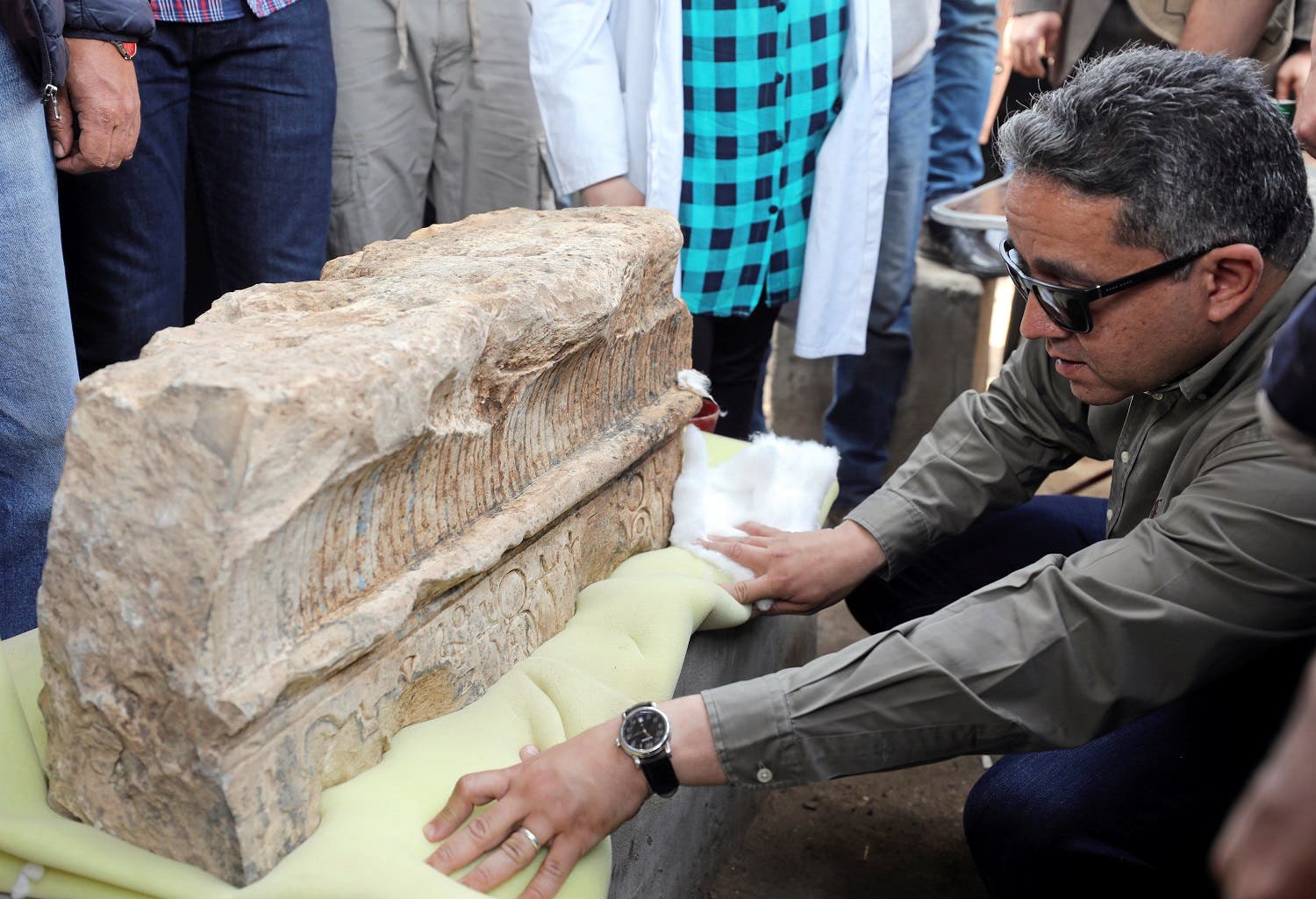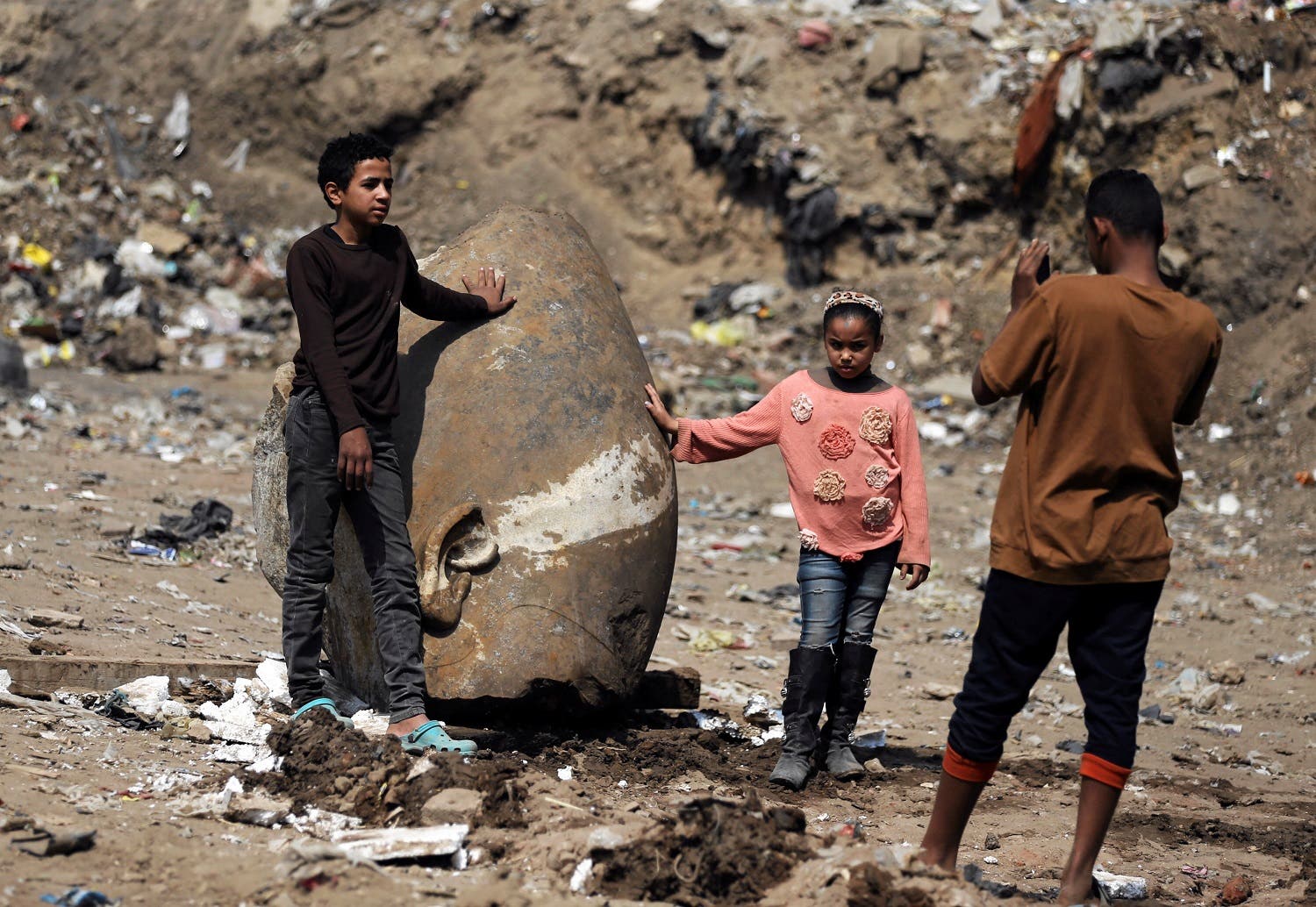one of the most important ever
Colossus depicting Ramses II found in Egypt amid accusations of neglect

Ramses II finding in Egypt
Cairo - Arab Today
Archaeologists from Egypt and Germany have found a massive eight-meter statue submerged in ground water in a Cairo slum that they say probably depicts revered Pharaoh Ramses II, who ruled Egypt more than 3,000 years ago.
The discovery, hailed by the Antiquities Ministry as one of the most important ever, was made near the ruins of Ramses II's temple in the ancient city of Heliopolis, located in the eastern part of modern-day Cairo.
“Last Tuesday they called me to announce the big discovery of a colossus of a king, most probably Ramses II, made out of quartzite,” Antiquities Minister Khaled al-Anani told Reuters on Thursday at the site of the statue's unveiling.
The most powerful and celebrated ruler of ancient Egypt, the pharaoh also known as Ramses the Great was the third of the Nineteenth Dynasty of Egypt and ruled from 1279 to 1213 BCE.


He led several military expeditions and expanded the Egyptian Empire to stretch from Syria in the east to Nubia in the south. His successors called him the “Great Ancestor”.
“We found the bust of the statue and the lower part of the head and now we removed the head and we found the crown and the right ear and a fragment of the right eye,” Anani said.
On Thursday, archaeologists, officials, local residents, and members of the news media looked on as a massive forklift pulled the statue's head out of the water
The joint Egyptian-German expedition also found the upper part of a life-sized limestone statue of Pharaoh Seti II, Ramses II's grandson, that is 80 centimeters long.
The sun temple in Heliopolis was founded by Ramses II, lending weight to the likelihood the statue is of him, archaeologists say.
It was one of the largest temples in Egypt, almost double the size of Luxor's Karnak, but was destroyed in Greco-Roman times. Many of its obelisks were moved to Alexandria or to Europe and stones from the site were looted and used for building as Cairo developed.
Experts will now attempt to extract the remaining pieces of both statues before restoring them. If they are successful and the colossus is proven to depict Ramses II, it will be moved to the entrance of the Grand Egyptian Museum, set to open in 2018.
Creation site
The discovery was made in the working class area of Matariya, among unfinished buildings and mud roads.
Dietrich Raue, head of the expedition's German team, told Reuters that ancient Egyptians believed Heliopolis was the place where the sun god lives, meaning it was off-limits for any royal residences.
“The sun god created the world in Heliopolis, in Matariya. That's what I always tell the people here when they say is there anything important. According to the Pharaonic belief, the world was created in Matariya,” Raue said.
“That means everything had to be built here. Statues, temples, obelisks, everything. But ... the king never lived in Matariya, because it was the sun god living here.”
The find could be a boon for Egypt's tourism industry, which has suffered many setbacks since the uprising that toppled autocrat Hosni Mubarak in 2011 but remains a vital source of foreign currency. The number of tourists visiting Egypt slumped to 9.8 million in 2011 from more than 14.7 million in 2010.


Earlier in the day, some social media users said that the statue was damaged during the retrieval as the archaeologists used improper tools to recover it.
Egypt’s Antiquities Ministry denied reports that an ancient statue had been damaged, the ministry posted on its Facebook page.
The ministry said that the statue, believed to belong to pharaonic King Ramses II, was retrieved on 9 March under the supervision of German and Egyptian archaeologists.
Last month, archaeologists discovered a pharaonic temple with large statues believed to be of King Ramses II under an outdoor marketplace in Cairo.
Source :Al Arabiya
GMT 08:29 2017 Thursday ,21 December
Royal row as body of king who aided Mussolini returnsGMT 08:36 2017 Sunday ,10 December
Egypt archaeologists discover mummy in LuxorGMT 07:50 2017 Wednesday ,15 November
Archaeologists find Greco-Roman mummy in EgyptGMT 08:49 2017 Sunday ,22 October
Ceremony marks 75 years since El Alamein battleGMT 08:39 2017 Sunday ,10 September
Egypt dig unearths goldsmith's tomb, mummies

In The Swiss Alps
Five things to know about Davos
Davos - Muslimchronicle
With the World Economic Forum kicking off in earnest on Tuesday, AFP presents a guide to the week-long event in the Swiss Alps. - WHAT IS ‘DAVOS‘? - Davos is shorthand forfighting hate speech
Instagram, Google+ join EU group
Brussels - Muslimchronicle
Facebook's Instagram and the Google+ social network have agreed to join an EU-sponsored group of US internet giants to combat online extremism, EU officials said Friday. EU officials added that
At Sports Court
Russians challenge doping ban
Geneva - Muslimchronicle
Dozens of Russian athletes banned by the International Olympic Committee for life over doping began an appeal against their suspension on Monday at the world's top sports court. The week-long hearing at the Court of Arbitration for Sport (CAS) includesIn New Aid For War-Torn Yemen
Saudi-led coalition announces $1.5bn
Sanaa - Muslimchronicle
The Saudi-led coalition fighting in Yemen has pledged $1.5bn (£1.1bn) in new humanitarian aid for the country. It will also increase the capacities of Yemeni ports to receive aid and cargo shipments, and set up 17 "safe-passage corridors" for humanitarian groups. ThreeParis show pays homage
To 'eternal style' of late Alaia
Paris - Muslimchronicle
Two months after legendary designer Azzedine Alaia's sudden death plunged the fashion world into mourning, an exhibition in homage to the "King of Cling" opened Monday in his studios in Paris. The Tunisian-born designer, renowned for the way his clothes hugged the body, died suddenly in November aged 82, reportedly of heart failure after falling down the stairs at his home. The diminutive maverick, who ignored fashion week convention by showing when and where he wanted, in July produced his first couture collection in six years to rapturous reviews. Now some of his most iconic dresses are going on display in the glass-roofed gallery next to his studio and home in the Marais district where he used to show his creations. It includes the dress worn by supermodel Naomi Campbell, his longtime friend and muse, when she led hisMaintained and developed by Arabs Today Group SAL.
All rights reserved to Arab Today Media Group 2023 ©
Maintained and developed by Arabs Today Group SAL.
All rights reserved to Arab Today Media Group 2023 ©


















